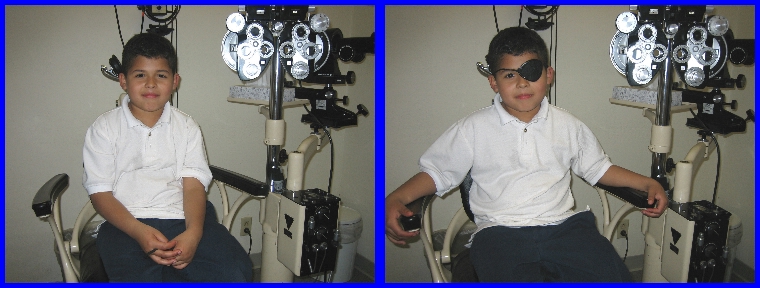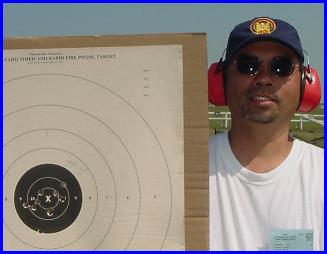
A care-free youngster with an underlying vision problem

Greetings Shooters,
Let us take a moment to discuss our future bullseye shooters. For those of us who are so fortunate, our most prized assets should not be our firearms, but rather our children, grandchildren, and for some of us, great grandchildren. I decided to write this article after examining the son of a club member so that others may benefit.
I recently saw two cases of post-treatment AMBLYOPIA in my office. Both patients have had eyeglasses and eye-patching during their childhood. One now has 20/20 vision while the other is LEGALLY BLIND in the affected eye. The youngster with the poorer vision is the son of a club member and is now a teenager and a fine young man. The only difference between these two individuals is the AGE WHEN TREATMENT WAS PERFORMED. The successfully treated youngster had amblyopia therapy at age five while the unsuccessful youngster had treatment much later, at age eleven.
Amblyopia, commonly known as LAZY EYE, is often misunderstood and I'd like to clarify this condition for our shooters. Infants actually have very good vision and this good vision needs to continue for proper development. Clear images from the eyes are transmitted to our vision center in our brain through the neural pathways. If there is any disturbance to the focus of either eye, then neurologically, vision does not develop properly, although the eye is otherwise in good health.
Two most commonly seen conditions causing amblyopia is an eye turn (strabismus), or a grossly out of focused eye (anisometropia). The first condition can readily be seen by the parents and the pediatrician. Because this is obvious, further care is often sought. Surgical intervention may be needed to realign the affected eye, and then along with vision therapy, vision will be restored. This must be done early. In the second condition, one eye may see perfectly clear while the other eye is either highly nearsighted, highly farsighted, or highly astigmatic. Only the good eye has proper focus while the other eye will develop amblyopia. Treatment again must be started early, however this anisometropia is not detectable by the lay individual and can only be detected with a "proper" eye examination. Certainly, toddlers would not know how to complain about their problem. They depend upon us.
There are varying degrees of amblyopia, from 20/25 vision to legally blind. Many factors contribute to how poorly the eye will develop if treatment is not done early and effectively. Seeking an eyecare professional who has expertise in amblyopia is essential. Even with our good health care system in this country (as compared to the rest of the world) and school screening, many kids seem to fall "through the cracks" and we still see untreated or a delay in treatment for amblyopia.
Once amblyopia develops permanently, future treatment would be of no value. There are no second chances such as an "alibi" during our sustained fire in a match. We, as parents, parents-to-be, or grandparents, need to be aware for the sake of our future bullseye shooters. If this article prompts a parent to bring their child in for an eye examination in a timely manner and amblyopia is diagnosed early, then I feel that my time in writing this article was well spent. Amblyopia must be detected early and be treated as soon as possible to avoid "permanent" vision loss.
The recommended intervals for examining a child by the American Optometric Association are at 6 months, at age 3, just before first grade and then every two years thereafter.Take care of those little tykes, for they may inherit our firearms and someday become future champions.
Good Vision and Good Shooting to All,
Norman H. Wong, O.D.
